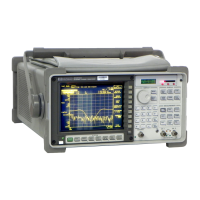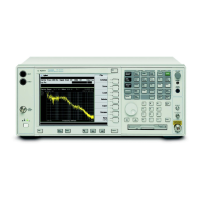Max Order Mode
Max Order Theory
Max order mode is the default mode. In max order mode, the max order
algorithm operates the complex data fitter (from now on, simply called the
curve fit routine) with successively larger system orders until it finds a good
model, or until the maximum system order is reached. Both the maximum
numerator order (number of zeros) and the maximum denominator order
(number of poles) can be specified. For example, entering 3 for the numerator
upper bound restricts the max order algorithm to finding a model that has a
maximum of three zeros.
The max order algorithm starts with a numerator/denominator order of 1,1 and
does a fit using the curve-fit routine given this order. The max order algorithm
automatically performs a synthesis on the fit model and compares this
frequency response to the measured frequency response. If the fit is poor, the
orders are incremented to 2,2, and another fit is done. This search upwards in
order continues until a good match is found or the upper bounds are reached.
The upper bounds do not have to be equal. The max order algorithm holds the
order at the first upper bound reached, and lets the other order climb to the
higher order if the fits are poor. If both upper bounds are reached before a
good fit is found, the max order algorithm returns the fit which came closest to
the measured frequency response.
When the curve fitter finds a good fit, the max order algorithm tries to reduce
the numerator order and denominator order if it determines that this may create
a lower-order model that still provides a close match to the measured frequency
response. This order reduction usually results in a numerator order lower than
the denominator order.
The max-order algorithm uses the coherence function. Coherence is a function
that represents the amount of output signal power due to the input stimulus. Its
value ranges from one (1) which is perfect, to zero (0) which is no coherence
(any value less than 0.9999 should not be considered “good”). Coherence is a
function of variance, which normally is derived from the multiple
measurements that occur during averaging.
The max-order algorithm uses the coherence function to determine how large
the difference can be between the synthesis of the fit model and the measured
frequency response in defining a good fit.
Agilent 35607A
Operator's Guide Curve Fit Option 1D3
16-7

